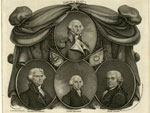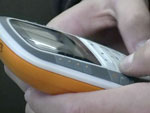Why do it?
Textbooks are often a major resource for students in their history class; however, students may not really be acquainted with their book or its content, layout, and supplementary resources. Use “getting to know your textbook” to introduce students to the genre of grade 512 history textbooks and prepare them to more effectively use the information and tools these books provide.
This activity often takes less than an hour, but it comes with a big payoff, as students become familiar with their textbook and its resources. Additionally, extending this activity can help students recognize the textbook as one historical account among many, and use active reading strategies to more easily understand its prose.
What is it?
“Getting to know the textbook” is a short lesson where students survey and explore their traditional print textbooks. Ideally this lesson occurs soon after students are first issued their books. Using one of several activities, students investigate textbook organization and layout, constituent features and extra resources, and get to know what is in their book so they can use it more effectively throughout the course.
Students learn that the textbook includes specific historical reference tools, such as timelines, various types of maps (e.g., physical, themed, political), and important primary sources like the text of the Declaration of Independence and the Constitution. (Frequently these two founding documents are annotated in helpful ways in a textbook’s appendix.) Charts, maps, and primary source images are often identified with page numbers in the prefatory material. Also included here may be a list of special features, such as an explanation of how historians examine artifacts and documents, or how to use the textbook when studying. After completion of this activity, students are poised to efficiently use their textbook as a reference tool and use its features to help them work through struggles with particular historical content or to complete particular assignments.
Example
Develop a Set of Questions
Survey your textbook ahead of time and identify key sections, features, and resources that students should notice and pay attention to. Using the Bank of Sample Questions handout, create a set of questions for your students. Remember to tailor this set for your specific students and book through selecting, modifying, and even adding to, the set in the bank. Make a handout that consists of these questions.
Create an Activity
This activity should require students answer the questions in your set. One possible activity is to use the set of questions as the basis of a textbook scavenger hunt. Specify a time for the hunt and reward students who complete a certain number of questions or, alternatively, have students work in groups and award points to groups where each participant has fully completed the worksheet.
Another possible activity is to have each student answer basic questions about source and layout and then, working in pairs or small groups, identify specific pages and features of the textbook that would help them understand a specific historical event or broad span of years that you assign to them. Similarly, students could be assigned specific historical questions and then share with the class the features of the textbook that helped them gather information pertinent to that question.
Send a Message
Finally, make the point that students should learn to survey and “get to know” each textbook they use. Sharing a story about how you were looking for some information and didn’t know it was right there in the book can help them see that this strategy can save them time and headaches.
Extension Activities
Active Reading
Any of these activities could be followed by one designed to help students develop active reading skills for the textbook. See Questions #7 and #8, under “Survey chapter layout,” or Question #6 under “Survey page layout” on the Bank handout for sample questions that help students learn to survey particular prose for main idea and story.
Textbook as Genre
Ask students to consider the purpose of the textbook and encourage them to see its potential as a reference book rather than the one true story about the past (as many students believe the textbook to be). Name it as a historical source, one among many, and identify some of its genre’s specific characteristics (for example, coverage of many standards-aligned topics, multiple authors, intended for use in classrooms, published by for-profit companies.) Teach an Opening Up the Textbook lesson to help challenge students’ ideas that this single book is an all-knowing master account.
Why is this a best practice?
Most students complete assigned work without realizing that textbooks often provide helpful methods for understanding and making sense of the past beyond the main narrative. Many students complain that textbooks are difficult or boring to read. By surveying the textbook, students begin to learn how to locate and use all of its resources—a skill that can transfer to all their courses.
Textbooks can be difficult to read. This activity can be one of the first to show students that learning to effectively and actively read and use text will be an integral part of your history class.





![Political Cartoon, Untitled [Progressive Fallacies], March 18, 1912, NARA Political Cartoon, Untitled [Progressive Fallacies], March 18, 1912, NARA](/sites/default/files/progressive.jpg)


